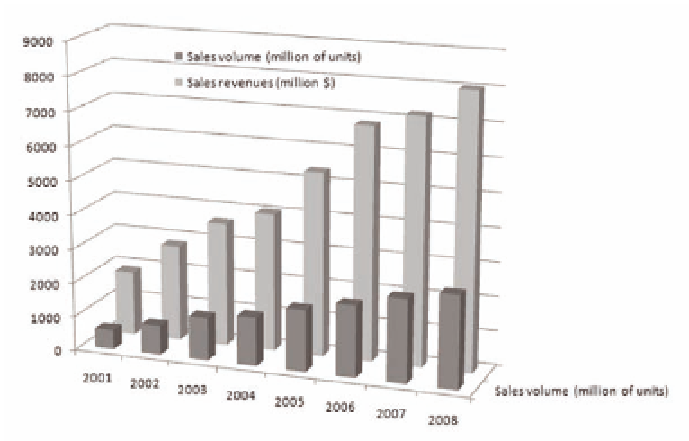Biomedical Engineering Reference
In-Depth Information
of portable communication and consumer electronic devices.
Nevertheless, notorious disadvantages such as element toxicity,
memory effects affecting the charge/discharge behavior, and limited
energy densities have influenced the progressive shifting to lithium
batteries. Rechargeable lithium batteries are light and compact.
Their high energy densities make them suitable for portable
applications. Moreover, the possibilities in further developments
of high-performance lithium batteries are not still limited. Their
charge/discharge lifespan and rates can be improved by research in
new materials and designs. This will allow the expansion of their
use to new applications deserving great expectations. In fact, Li-ion
batteries share 80% of the battery industry market. The global sales
of Li-ion batteries were 2.5 billion units in 2006 and continue to
grow. In 2008, 2.71 billion units of Li-ion batteries were sold across
the world, with a sales value of $8.03 billion. Cellular phone market
accounts for 60% of the total consumption. The sales are expected
to reach 3 billion units in 2010 in the world, with power and
polymer batteries to be the new sources of growth of the battery
market. Figure 5.1 illustrates a market that is far from exhausting
its growing potential.
Figure 5.1
Global Li-ion Battery Market Scale, 2001-2008. Source:
Market Avenue.









Search WWH ::

Custom Search